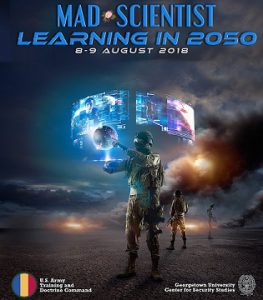 [Editor’s Note: On 8-9 August 2018, the U.S. Army Training and Doctrine Command (TRADOC) co-hosted the Mad Scientist Learning in 2050 Conference with Georgetown University’s Center for Security Studies in Washington, DC. Leading scientists, innovators, and scholars from academia, industry, and the government gathered to address future learning techniques and technologies that are critical in preparing for Army operations in the mid-21st century against adversaries in rapidly evolving battlespaces. One finding from this conference is that tomorrow’s Soldiers will learn differently from earlier generations, given the technological innovations that will have surrounded them from birth through their high school graduation. To effectively engage these “New Humans” and prepare
[Editor’s Note: On 8-9 August 2018, the U.S. Army Training and Doctrine Command (TRADOC) co-hosted the Mad Scientist Learning in 2050 Conference with Georgetown University’s Center for Security Studies in Washington, DC. Leading scientists, innovators, and scholars from academia, industry, and the government gathered to address future learning techniques and technologies that are critical in preparing for Army operations in the mid-21st century against adversaries in rapidly evolving battlespaces. One finding from this conference is that tomorrow’s Soldiers will learn differently from earlier generations, given the technological innovations that will have surrounded them from birth through their high school graduation. To effectively engage these “New Humans” and prepare  them for combat on future battlefields, the Army must discard old paradigms of learning that no longer resonate (e.g., those desiccated lectures delivered via interminable PowerPoint presentations) and embrace more effective means of instruction.]
them for combat on future battlefields, the Army must discard old paradigms of learning that no longer resonate (e.g., those desiccated lectures delivered via interminable PowerPoint presentations) and embrace more effective means of instruction.]
The recruit of 2050 will be born in 2032 and will be fundamentally different from the generations born before them. Marc Prensky, educational writer and speaker who coined the term digital native, asserts this “New Human” will stand in stark contrast to the “Old Human” in the ways they assimilate information and approach learning.1 Where humans today are born into a world with ubiquitous internet, hyper-connectivity, and the Internet of Things, each of these elements are generally external to the human. 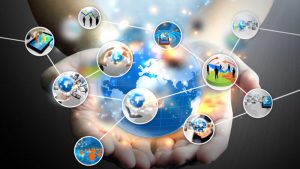 By 2032, these technologies likely will have converged and will be embedded or integrated into the individual with connectivity literally on the tips of their fingers. The challenge for the Army will be to recognize the implications of this momentous shift and alter its learning methodologies, approach to training, and educational paradigm to account for these digital natives.
By 2032, these technologies likely will have converged and will be embedded or integrated into the individual with connectivity literally on the tips of their fingers. The challenge for the Army will be to recognize the implications of this momentous shift and alter its learning methodologies, approach to training, and educational paradigm to account for these digital natives.
 These New Humans will be accustomed to the use of artificial intelligence (AI) to augment and supplement decision-making in their everyday lives. AI will be responsible for keeping them on schedule, suggesting options for what and when to eat, delivering relevant news and information, and serving as an on-demand embedded expert.
These New Humans will be accustomed to the use of artificial intelligence (AI) to augment and supplement decision-making in their everyday lives. AI will be responsible for keeping them on schedule, suggesting options for what and when to eat, delivering relevant news and information, and serving as an on-demand embedded expert. 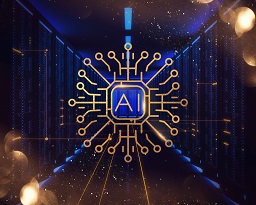 The Old Human learned to use these technologies and adapted their learning style to accommodate them, while the New Human will be born into them and their learning style will be a result of them. In 2018, 94% of Americans aged 18-29 owned some kind of smartphone.2 Compare that to 73% ownership for ages 50-64 and 46% for age 65 and above and it becomes clear that there is a strong disconnect between the age groups in terms of employing technology. Both of the leading software developers for smartphones include a built-in artificially intelligent digital assistant, and at the end of 2017, nearly half of all U.S. adults used a digital voice assistant in some way.3 Based on these trends, there likely will be in the future an even greater technological wedge between New Humans and Old Humans.
The Old Human learned to use these technologies and adapted their learning style to accommodate them, while the New Human will be born into them and their learning style will be a result of them. In 2018, 94% of Americans aged 18-29 owned some kind of smartphone.2 Compare that to 73% ownership for ages 50-64 and 46% for age 65 and above and it becomes clear that there is a strong disconnect between the age groups in terms of employing technology. Both of the leading software developers for smartphones include a built-in artificially intelligent digital assistant, and at the end of 2017, nearly half of all U.S. adults used a digital voice assistant in some way.3 Based on these trends, there likely will be in the future an even greater technological wedge between New Humans and Old Humans.
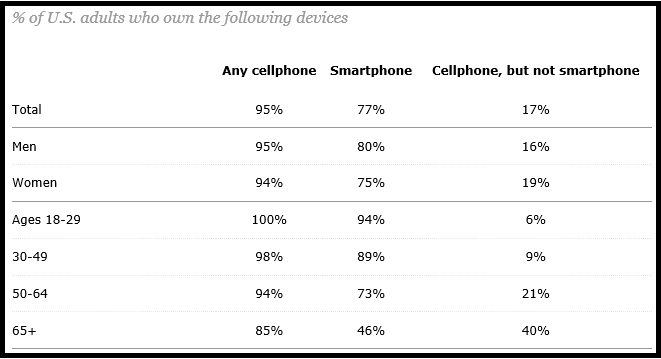
New Humans will be information assimilators, where Old Humans were information gatherers. The techniques to acquire and gather information have evolved swiftly since the advent of the printing press, from user-intensive methods such as manual research, to a reduction in user 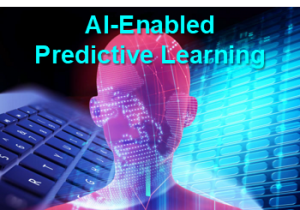 involvement through Internet search engines. Now, narrow AI using natural language processing is transitioning to AI-enabled predictive learning. Through these AI-enabled virtual entities, New Humans will carry targeted, predictive, and continuous learning assistants with them. These assistants will observe, listen, and process everything of relevance to the learner and then deliver them information as necessary.
involvement through Internet search engines. Now, narrow AI using natural language processing is transitioning to AI-enabled predictive learning. Through these AI-enabled virtual entities, New Humans will carry targeted, predictive, and continuous learning assistants with them. These assistants will observe, listen, and process everything of relevance to the learner and then deliver them information as necessary.
There is an abundance of research on the stark contrast between the three generations currently in the workforce: Baby Boomers, Generation X, and Millennials.4, 5 There will be similar fundamental differences between Old Humans and New Humans and their learning styles. The New Human likely will value experiential learning over traditional classroom learning.6 The  convergence of mixed reality and advanced, high fidelity modeling and simulation will provide New Humans with immersive, experiential learning. For example, Soldiers learning military history and battlefield tactics will be able to experience it ubiquitously, observing how each facet of the battlefield affects the whole in real-time as opposed to reading about it sequentially. Soldiers in training could stand next to an avatar of General Patton and experience him explaining his command decisions firsthand.
convergence of mixed reality and advanced, high fidelity modeling and simulation will provide New Humans with immersive, experiential learning. For example, Soldiers learning military history and battlefield tactics will be able to experience it ubiquitously, observing how each facet of the battlefield affects the whole in real-time as opposed to reading about it sequentially. Soldiers in training could stand next to an avatar of General Patton and experience him explaining his command decisions firsthand.
There is an opportunity for the Army to adapt its education and training to these growing differences. The Army could—and eventually will need—to recruit, train, and develop New Humans by altering its current structure and recruitment programs. It will become imperative to conduct training with new tools, materials, and technologies that will allow Soldiers to become information assimilators. Additionally, the incorporation of experiential learning techniques will entice Soldiers’ learning. There is an opportunity for the Army to pave the way and train its Soldiers with cutting edge technology rather than trying to belatedly catch up to what is publicly available.
Evolution in Learning Technologies
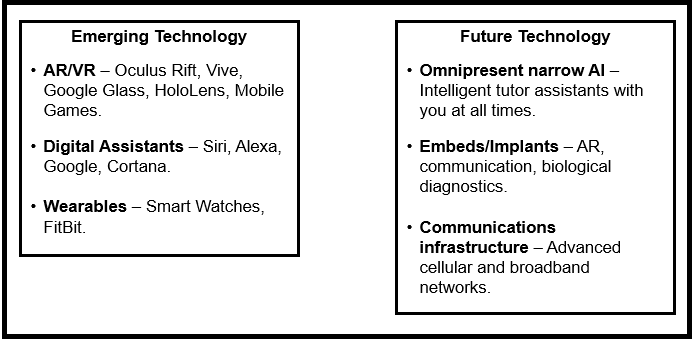
If you enjoyed this post, please also watch Elliott Masie‘s video presentation on Dynamic Readiness and Mark Prensky‘s presentation on The Future of Learning from of the Mad Scientist Learning in 2050 Conference …
… see the following related blog posts:
… and read The Mad Scientist Learning in 2050 Final Report.
1 Prensky, Mark, Mad Scientist Conference: Learning in 2050, Georgetown University, 9 August 2018
2 http://www.pewinternet.org/fact-sheet/mobile/
3 http://www.pewresearch.org/fact-tank/2017/12/12/nearly-half-of-americans-use-digital-voice-assistants-mostly-on-their-smartphones/
4 https://www.nacada.ksu.edu/Resources/Clearinghouse/View-Articles/Generational-issues-in-the-workplace.aspx
5 https://blogs.uco.edu/customizededucation/2018/01/16/generational-differences-in-the-workplace/



